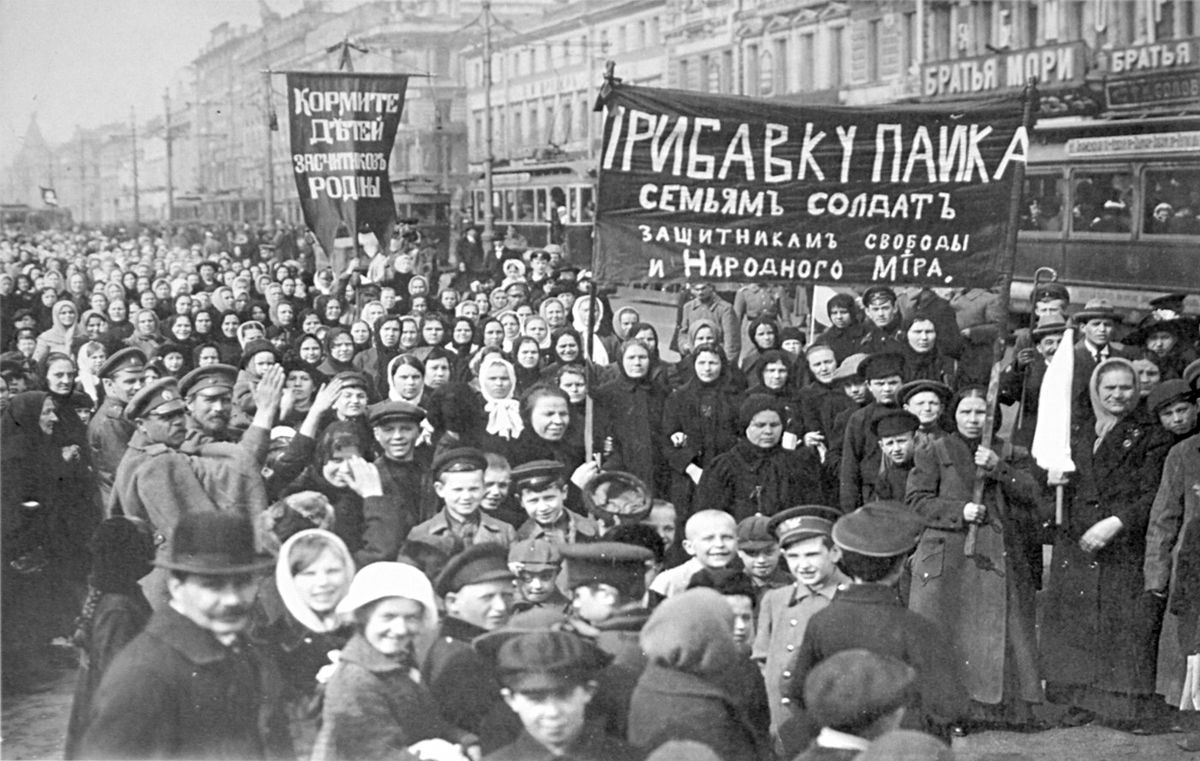In 1917 a movement which started as rapid protests managed to disband the centuries-old tsardom in just a few days.
Down with the government! Down with the war! Comrades, arm yourselves with everything possible—bolts, screws, rocks, and go out of the factory and start smashing the first shops you find!
- unknown worker shouting to his colleagues day after the outbreak of Revolution
In the highly industrialized Petrograd, then capital city of the Russian Empire, workers' demonstration happened very often. And the third winter during the First World War was the harshest one yet. Due to low temperatures and snowstorms trains with food and firewood kept being delayed. It is no wonder then that during the winter months of 1916 and 1917 strikes were held in several workplaces, including the Putilov Plant where the revolution of 1905 started.
The day considered to be the beginning of the February Revolution was the International Women's Day, when female workers from the textile factory marched to the Nevsky Prospect to demand a bigger supply of bread. 23 February [8 March] began with street protests and disorders, demands for "Bread!"- recalled later Mikhail Ivanovich Tereschenko, one of the eye-witnesses of February Revolution*. – Political demands and slogans against the government were also heard: "Down with the Tsar!" and so on.
At first, it was fear of hunger which led many people to the streets, but with time their demands changed and evolved into political ones. Revolution spread and more people gathered on the streets. On the third day, protests turned into a regular fight. As Tsar was outside of Petrograd, Duma decided to replace policemen with soldiers. Most of them were young and unqualified cadets who openly agreed with protesters' demands. Instead of supporting the state, they joined the insurgents. On the next day revolutionaries managed to seize the arsenal, free prisoners and take over Petrograd Cartridge Factory which became their source of ammunition.
The situation was so serious that on 2 March 1917 [15 March 1917] Duma advised Nicholas II to abdicate. Tsar decided to cede power to his youngest brother Michael Alexandrovich who, however, declined the offer. The tsardom was dissolved. Ruling power was divided between two newly established institutions: Petrograd Soviet of Workers' and Soldiers' Deputies (also known as Petrograd Soviet – representatives of the workers council) and the Provisional Committee of the State Duma. The latter constituted the Provisional Government which was led by the new prime minister prince Georgy Lvov.
This dual power solution caused a constant power struggle between Provisional Government and Petrograd Soviet. Russia became a republic but economic and political problems kept mounting. The second revolution, known as the October Revolution, broke out only a few months later.
by Antoni Zakrzewski
*February Revolution actually started in March 1917. Its name derives from an Old Style calendar used at the time in the Russian Empire. In this article Old Style dates are accompanied by the New Style dates placed in brackets.
Bibliography:
Figes Orlando, Tragedia Narodu. Rewolucja rosyjska 1891-1924, Wrocław 2009.
Hasegawa Tsuyoshi, The February Revolution, Petrograd, 1917, Seattle 1981.
Lyanders Semion, The fall of Tsarism. Untold stories of the February 1917 Revolution, Oxford 2013.
